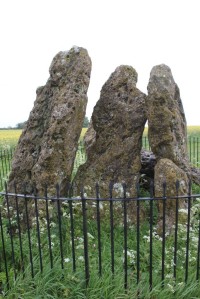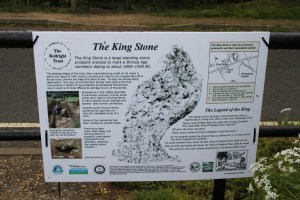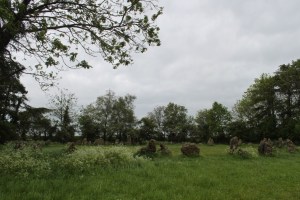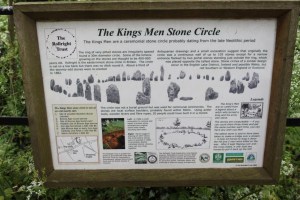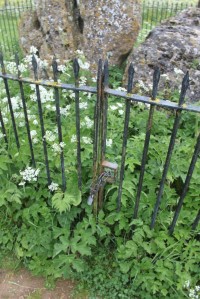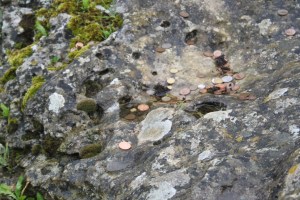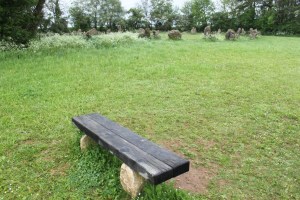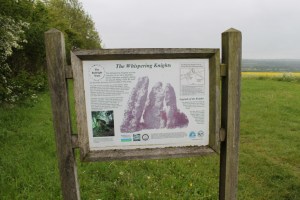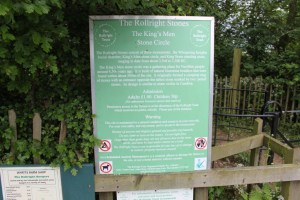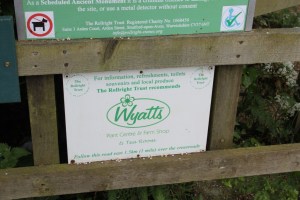Re-posted from Archaeodeath
Today was the first day of a long expedition with two of my offspring to explore places of antiquity and folklore connected to the Past in its Place project. First stop on a horribly wet and windy Friday: the Rollright Stones in Oxfordshire.
There are three principal things to see here, the King’s Stone, the King’s Men and the Whisper Knights. However, what is important to remember is that these are fragmentary timemarks, surviving monumental traces of a far more complex, multi-period ceremonial landscape revealed, in part and in a sketchy way, by both antiquarian and archaeological research.
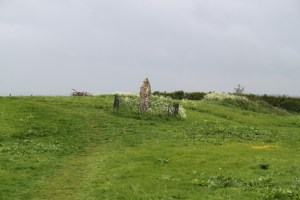
The distinctive natural mound upon which the King’s Stone is situated, may have attracted a sprawling early Anglo-Saxon cemetery to its east, as well as inspiring the folklore of the stone
The Whispering Knights are by far the oldest, the remaining five stones of an early Neolithic dolmen, constructed as a funerary and ceremonial monument in the fourth millennium BC.
The King’s Men are 77 remaining stones of a Late Neolithic/Chalcolithic stone circle.
The King’s Stone is a monolith supposedly of comparable date, and related to, the King’s Men stone circle.
The Anglo-Saxon Reuse of Rollright
The later use of the site is more interesting to me than its origins. In the early Anglo-Saxon period, the site attracted a cemetery to the east along the ridge from the King’s Stone and perhaps attracted to the natural ridge upon which it is situated. Early Anglo-Saxon period communities may have regarded this natural mound to have been an ancient burial monument for two – to paraphrase another scholar’s hyperbole – two ‘bleeding obvious’ reasons.
First, monument reuse is a widely attested practice in this period and their engagement with zillions of other monuments which would have allowed them, as with all early medieval people to identify distinctive round and oblong eminences as potentially funerary in nature.
Second, far before the proliferation of barrow-burial in the seventh century, early medieval populations regularly interred their dead beneath burial mounds of various sizes and structures.
Third, as excavations around the King’s Stone attest, prehistoric burials were very superficially located into this natural mound, meaning that in the Anglo-Saxon period such remains might readily be uncovered during any acts of construction or new grave-digging, thus prompting further burials and provoking funerary narratives of ancestral or legendary groups having previously utilised the place. Unfortunately, very little is known about the extent and character of early medieval activity around this site and more information would be most welcome.
Frustratingly for those obsessed with monument reuse being a practice of seventh-centuryelites, this is one of many sites seemingly (based admittedly on fragmentary evidence) of sixth-century monument reuse for burial known from Oxfordshire and other counties. Still, the site’s significance may have persisted into the later Anglo-Saxon period and beyond. The monuments are situated upon a county boundary; indeed today the King’s Men are in Oxfordshire and across the road to the north, the King’s Stone is in Warwickshire. In 2004, Sarah Semple (Durham University) incorporated the folklore of Rollright in her thinking regarding the persistent significance of prehistoric ceremonial landscapes as locales for assembly and burial in the early medieval world. Might more than burial have taken place at this prehistoric ceremonial landscape during the early medieval period?
Folklore is for Kids
I’m an archaeologist, yet what on earth is the point in me explaining the real date, functions, significance and parallels of the monuments to a three-year-old boy and a four-year-old girl? I did, but they weren’t interested. Instead, they liked the folklore of the sites, as mediated by the heritage signboards. It was all a witch (or witches) fault (or old mother Shipton, whoever she was), turning men into stone for reasons that are barely apparent (other than that they probably deserved it for their aspirations to control all of England…). Still, a good old dose of magic and early modern moralising and misogyny is far more interesting than the archaeology, and far more geared to imposing prejudices and fable when engaging with these monuments in the modern landscape.
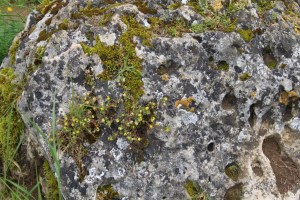 Of course I am not belittling the folklore, I am emphasising how it is fit for telling and fit for moralising, responding to the forms and materiailities of the stones as experienced. Furthermore, the stories are carefully wrapped around the specificities of this particular set of monuments, not a generic set of archaeological typologies. So the King was turned to stone by the witch because he couldn’t see Long Compton having taken seven steps towards it: the myth engages with the stone but also the natural ridge, the same one that the early medieval population may have taken to be a long barrow.
Of course I am not belittling the folklore, I am emphasising how it is fit for telling and fit for moralising, responding to the forms and materiailities of the stones as experienced. Furthermore, the stories are carefully wrapped around the specificities of this particular set of monuments, not a generic set of archaeological typologies. So the King was turned to stone by the witch because he couldn’t see Long Compton having taken seven steps towards it: the myth engages with the stone but also the natural ridge, the same one that the early medieval population may have taken to be a long barrow.
These are stones that were once people, and might become people again, enjoy dancing hand-in-hand, need to talk to each other, to drink from the river, etc etc. The proximities, forms, shapes and textures of stones render them ‘alive’ and buzzing with narratives.
Modern Engagement
Of course the Rollright Stones are a focus of heritage conservation, modern religious practices as well as those interested in prehistory and history. I am a great fan of the Ministry of Works-style iron fencing that delineate the King’s Stone and the Whispering Knights.
We also participated in a commonplace votive practice facilitated by the railings around the Whispering Knights – we threw coins onto the recumbent stone. We saw other votives – flowers and such like – left on the King’s Men. Of course adding things to a site is one memorial and votive practice, chipping away the stone is a destructive antithetical practice; the odd shape of the King’s Stone is attributed to the 19th-century practice of chipping away stone from the monolith because of its apotropaic qualities.
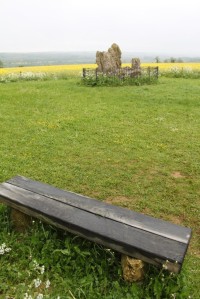 As I have noticed elsewhere (as would anyone visiting these sites), memorial benches are drawn to prehistoric monuments. In this case via two matching benches, one by the King’s Men and one by the Whispering Knights, link sitting with views of the monuments and commemoration of the dead.
As I have noticed elsewhere (as would anyone visiting these sites), memorial benches are drawn to prehistoric monuments. In this case via two matching benches, one by the King’s Men and one by the Whispering Knights, link sitting with views of the monuments and commemoration of the dead.
At Wyatt’s Farm, you can even buy ‘The Rollright Burgers’. We didn’t, we had other sites to head off in search of…
 Heritage and Help
Heritage and Help
The Rollright Stones are fabulous and the ridge-top location is spectacular. It is a place attracting neo-Pagan worship and archaeological enthusiasts, a place attracting modern art installations and activities for people from the region. The site is freely open with only an honest box to receive the modest entrance fee. It has straightforward heritage display boards that balance the archaeology (visible and invisible to visitors) with the folklore. It has audio-guides available online. This is a fun, simply displayed and managed, yet essential attraction as one of the most easterly of Britain’s megalithic monumental complexes. Still, the Rollright Trust that owns and runs the site needs your support and your praise as a superb example of a site supported and run independently and on a charity basis.



